Pyridaphenthion
Synonym(s):O-(1,6-Dihydro-6-oxo-1-phenyl-3-pyridazinyl) O,O-diethyl phosphorothioate
- CAS NO.:119-12-0
- Empirical Formula: C14H17N2O4PS
- Molecular Weight: 340.33
- MDL number: MFCD00145189
- EINECS: 204-298-5
- SAFETY DATA SHEET (SDS)
- Update Date: 2025-07-04 15:34:50
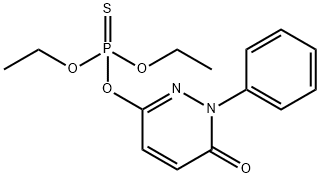
What is Pyridaphenthion?
Description
Pyridaphenthion is a pale yellow solid, mp 54.5–56 ?C, vp 0.00147 mPa (20 ?C). Solubility in water is 100 mg/L (20 ?C). It is very soluble in acetone, methanol, and diethyl ether. Log Kow = 3.2.
The Uses of Pyridaphenthion
Pyridaphenthion is used to control a wide range of chewing and sucking insects and mites in rice, vegetables, fruit and ornamentals.
Definition
ChEBI: Pyridaphenthion is an organic thiophosphate, an organothiophosphate insecticide and a pyridazinone. It has a role as an EC 3.1.1.7 (acetylcholinesterase) inhibitor and an agrochemical. It is functionally related to a 6-hydroxy-2-phenylpyridazin-3-one.
Safety Profile
Poison by intraperitoneal route. Moderately toxic by ingestion and skin contact. When heated to decomposition it emits very toxic fumes of SOx, POx, and NOx. Used to control chewing and suckmg insects on rice, fruits, vegetables, and cereals.
Metabolic pathway
Pyridaphentluon is photolytically transformed into the oxon and phenylmaleic hydrazide. In the mouse its metabolism involves oxidative dearylation, oxidative desulfuration to the oxon, de-ethylation and conjugation of phenylmaleic hydrazide produced as the ultimate product of stage I metabolism and is typical of many phosphorothioates. A marked difference between metabolism in mice and rats was shown, with rats excreting no desethylpyridaphenthion and excreting all of the phenyl-maleic hydrazide in an unconjugated form.
Metabolism
More than 70% of the dose administered to rats and mice was excreted within 24 h in the urine. The major metabolites excreted are phenylmaleic hydrazide and desethyl pyridafenthion-oxon. The half-life in soil is 11–24 d.
Degradation
The photolysis of pyridaphenthion on a glass slide irradiated with both short wavelength UV light and light of wavelength >300 nm was investigated by Tsao et al. (1989). Samples were irradiated for 48 hours at unrecorded light intensity as thin films spread on petri dishes or in solution in water, methanol or hexane under an oxygen atmosphere. The effects of photosensitisers was also assessed in the thin film experiments. The photoproducts were analysed by TLC, GC-MS and 1H NMR spectroscopy. Under thin film conditions pyridaphenthion was photodegraded more quickly with light >300 nm than by 254 um light and was degraded faster as a thin film than in solution. The main photoproducts from the glass surface and aqueous solution were pyridaphenthion oxon (2) and phenylmaleic hydrazide (3) (Scheme 1); the only other products were small amounts of polymers. Photosensitisers accelerated photolysis markedly with the most effective being a plant-derived natural product, cis-dehydromatricaria ester. It is notable that a simple chemical oxidation using 3-chloroperoxybenzoic acid gave the same two products, 2 and 3.
Toxicity evaluation
The acute oral LD50 for rats is 769–850 mg/kg. Inhalation LC50 (4 h) for rats is >1.13 mg/L air.
Properties of Pyridaphenthion
| Melting point: | 54.5~56.5℃ |
| Boiling point: | 416.2±28.0 °C(Predicted) |
| Density | 1.30±0.1 g/cm3(Predicted) |
| vapor pressure | 1.47×10-6 Pa (20 °C) |
| Flash point: | -4 °C |
| storage temp. | APPROX 4°C
|
| pka | -2.09±0.40(Predicted) |
| form | neat |
| Water Solubility | 100mg l-1 (20°C) |
| BRN | 302741 |
| CAS DataBase Reference | 119-12-0(CAS DataBase Reference) |
| NIST Chemistry Reference | Phosphorothioic acid, o-(1,6-dihydro-6-oxo-1-phenyl-3-pyridazinyl) o,o-diethyl ester(119-12-0) |
| EPA Substance Registry System | Pyridaphenthion (119-12-0) |
Safety information for Pyridaphenthion
| Signal word | Warning |
| Pictogram(s) |
 Exclamation Mark Irritant GHS07 |
| Precautionary Statement Codes |
P261:Avoid breathing dust/fume/gas/mist/vapours/spray. P264:Wash hands thoroughly after handling. P264:Wash skin thouroughly after handling. P270:Do not eat, drink or smoke when using this product. P271:Use only outdoors or in a well-ventilated area. P301+P312:IF SWALLOWED: call a POISON CENTER or doctor/physician IF you feel unwell. |
Computed Descriptors for Pyridaphenthion
New Products
4,4-Difluoropiperidine hydrochloride tert-butyl 9-methoxy-3-azaspiro[5.5]undecane-3-carboxylate Indole Methyl Resin N-Isopropylurea N,N-Dicyclohexylcarbodiimide(DCC) MELDRUMS ACID 5-METHYLISOXAZOLE-4-CARBOXYLIC ACID Magnessium Bis glycinate Zinc ascorbate 1-bromo-2-butyne 2-acetamidophenol 9(10H)-anthracenone Erythrosin B, 4-Piperidinopiperidine 2-((4-morpholinophenylamino) (methylthio) methylene) malononitrile 2,4-dihydroxybenzaldehyde 3-(4-morpholinophenylamino)-5-amino-1H-pyrazole-4-carbonitrile Methyl 2-methylquinoline-6-carboxylate 2,6-dichloro-4-nitropyridine 4-Bromo-2-chlorobenzonitrile 2-(benzylamino)acetic acid hydrochloride 4-(tert-Butoxycarbonylamino)but- 2-ynoic acid 3,4-dihydro-2H-benzo[b][1,4]dioxepine 1-Phenyl-1-cycloprppanecarboxylicacidRelated products of tetrahydrofuran
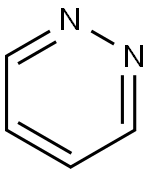



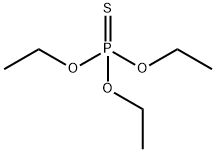
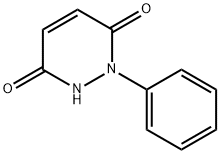
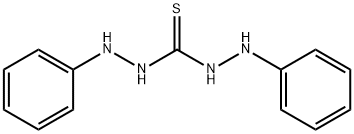
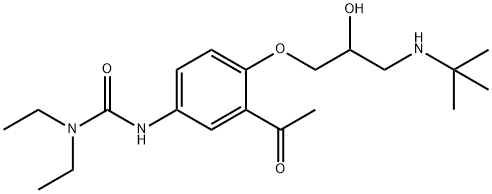
You may like
-
 Pyridaphenthion CAS 119-12-0View Details
Pyridaphenthion CAS 119-12-0View Details
119-12-0 -
 3-(4-amino-1-oxoisoindolin-2-yl)-1-methylpiperidine-2,6-dione 98%View Details
3-(4-amino-1-oxoisoindolin-2-yl)-1-methylpiperidine-2,6-dione 98%View Details -
 614-19-7 98%View Details
614-19-7 98%View Details
614-19-7 -
 3112-85-4 Methyl phenyl sulfone 98%View Details
3112-85-4 Methyl phenyl sulfone 98%View Details
3112-85-4 -
 20677-73-0 (2,2-diethoxyethyl)methylamine 98%View Details
20677-73-0 (2,2-diethoxyethyl)methylamine 98%View Details
20677-73-0 -
 3-(4-(hydroxyamino)-1-oxoisoindolin-2-yl)piperidine-2,6-dione 98%View Details
3-(4-(hydroxyamino)-1-oxoisoindolin-2-yl)piperidine-2,6-dione 98%View Details -
 57381-49-4 2-bromo-4-chlorobenzonitrile 98%View Details
57381-49-4 2-bromo-4-chlorobenzonitrile 98%View Details
57381-49-4 -
 4,6-dichloropyrimidine-5-carbaldehyde 98%View Details
4,6-dichloropyrimidine-5-carbaldehyde 98%View Details
5305-40-8
